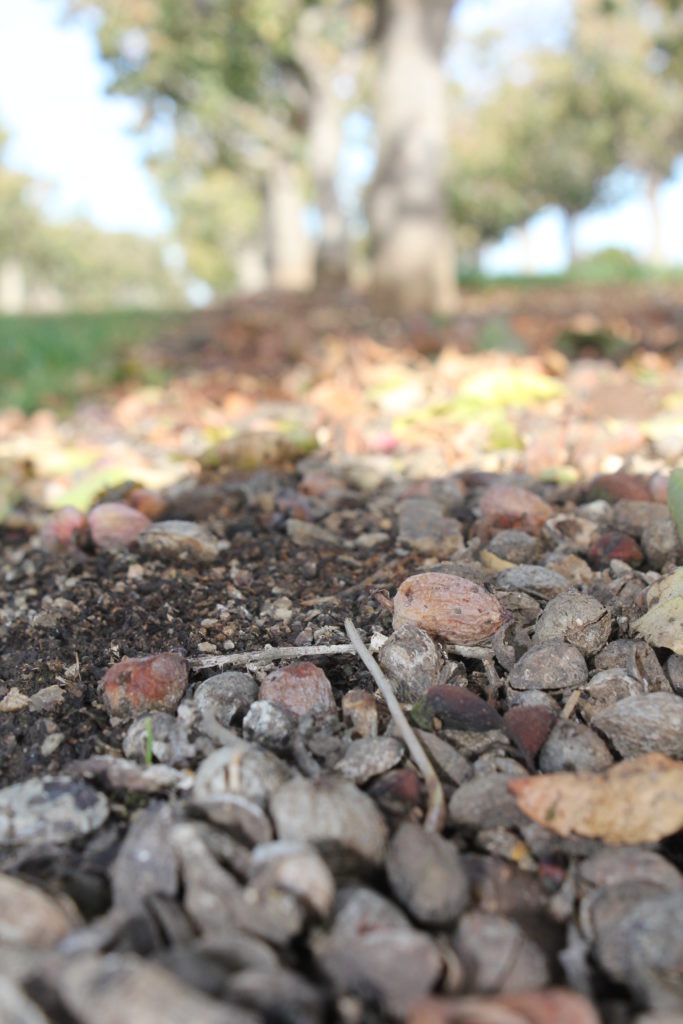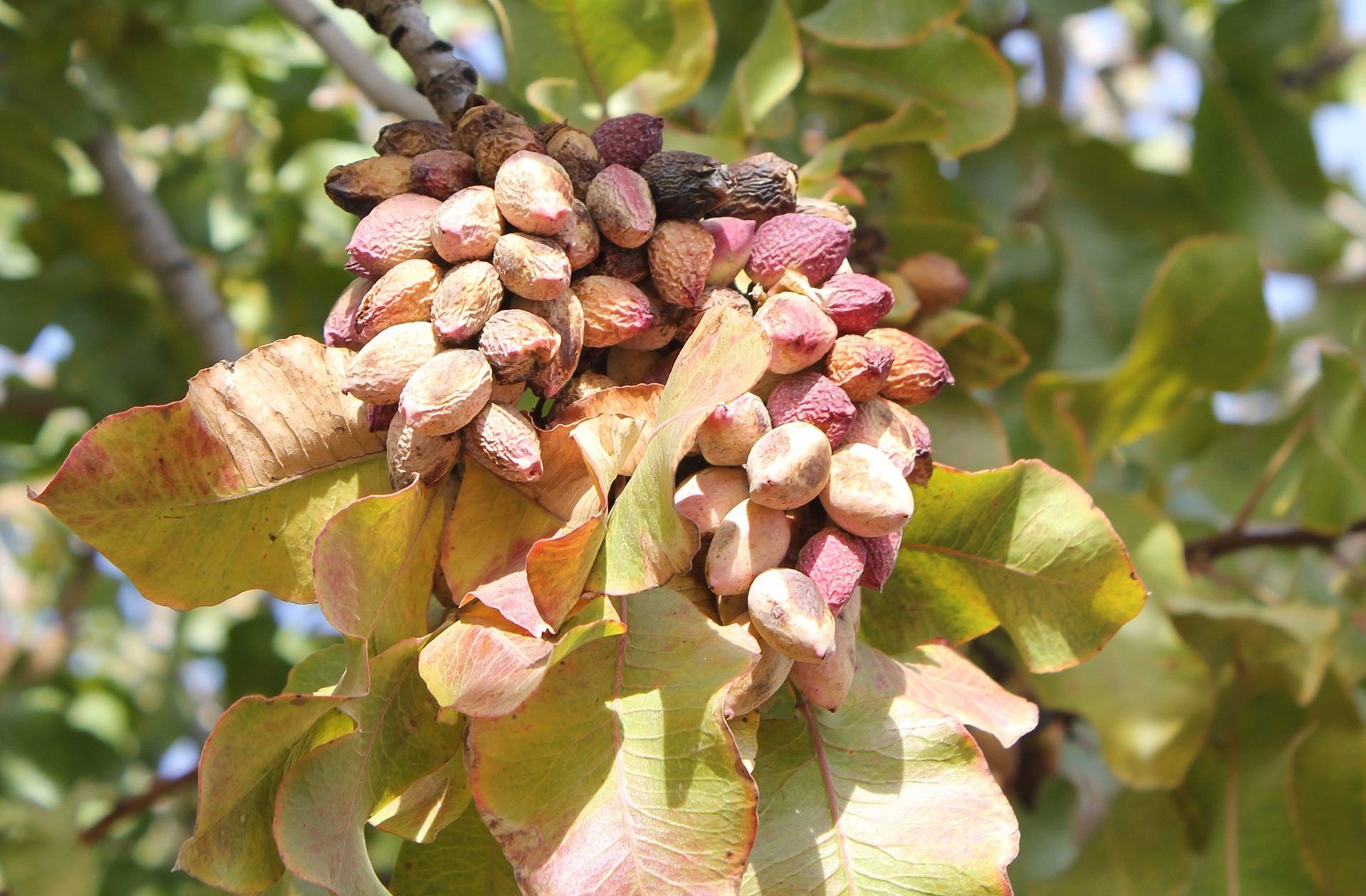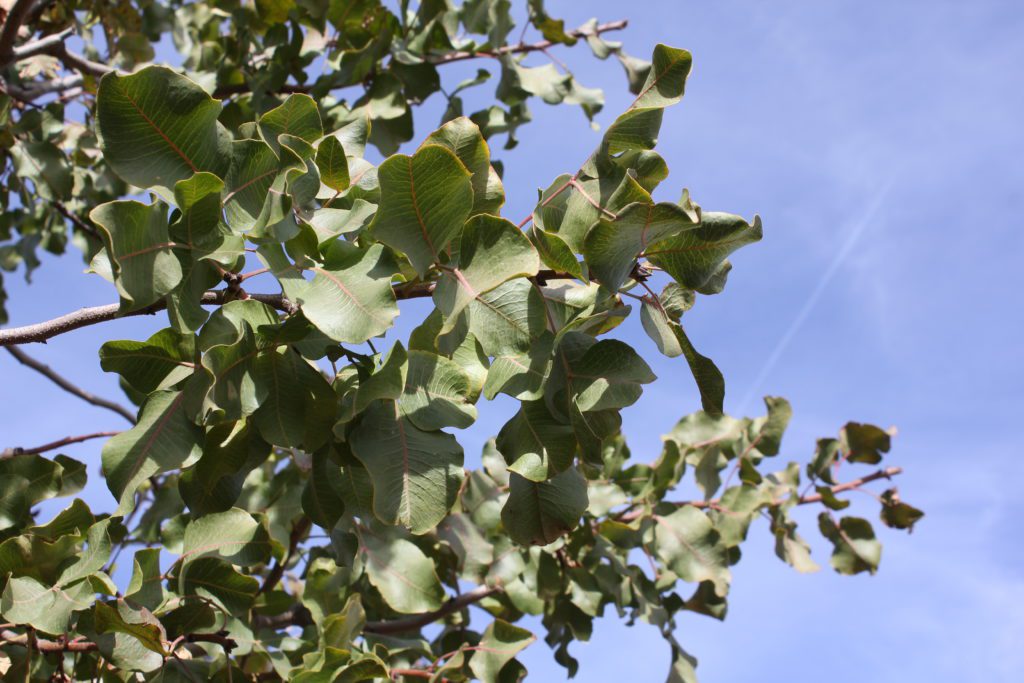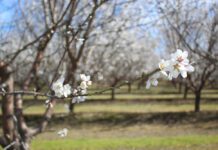Eighty-degree days in the month of November did not send California pistachio trees into their winter rest period on schedule. With harvest at an end and irrigations done to fill soil profile, the trees were primed to enter their needed dormant stage, but warm days and barely cold nights are not conducive to sending pistachio trees into dormancy.
(Editor’s note: the end of the month brought some welcome cold to pistachio growing regions in the San Joaquin Valley. How the remainder of the dormant season plays out is yet to be seen.)
Industry Research
Industry research has determined a lack of sufficient hours below 45 degrees F affects the nut crop that develops in the spring. There can be poor fruit bud development, delayed or strung out bloom and poor overlap with pollinators. The ability to set a crop can be affected as well as maturity timing resulting in need for multiple harvests.
“We know these trees have a winter rest requirement,” said Craig Kallsen, Kern County University of California Cooperative Extension (UCCE) farm advisor. How to measure the weather conditions that send and keep the trees at rest is still being debated. Measurements don’t always match what we see in valley pistachio orchards, Kallsen said.
Other factors including alternate bearing, nutritional status of trees, pest and disease pressures can exacerbate trees’ response to lack of winter rest.
November Through February
If the period from November through February has a lot of days and nights with below 45 degree F temperatures and few spikes above 65, pistachio growers can probably rest easy, Kallsen said. On the other hand, if a few cold spells are interspersed with warm daytime temperatures, growers know that crop yields may be affected.
Information about potential yields could be helpful to the pistachio industry to be more efficient with harvest and postharvest resources including labor, machinery, processing facility capacity, storage and marketing, Kallsen noted in an article published in HortScience.
University Research
Research done by Dr. Julian Crane, Dr. Louise Ferguson and UCCE farm advisor emeritus Bob Beede found that the Kerman variety requires 750 hours below 45 degrees F and Peters requires 850 hours to leaf out and bloom uniformly in the spring.
How to calculate the amount of time the trees are at winter rest and correlating that to yields is not an exact science. Researchers are still looking at ways to help pistachio trees overcome a lack of winter chill.
Kallsen’s study aimed to identify air temperature thresholds and time periods to more accurately predict pistachio crop yields.
His report, the study of temperature related variables associated with yields in the Kerman variety in the San Joaquin Valley, found that the previous year’s harvest, hourly air temperature accumulations above 26.7 or 29.4 degrees C from March 20 to April 25, hourly air temperature accumulations below 7.2 degrees C from November 15 to February 15 and hourly air temperature accumulations above 18.3 degrees C from November 15-February 15. Were the most valuable predictors of crop yields in pistachios.
Track and Record Winter Chill
Is it critical that during the winter months pistachio growers keep track of the temperatures in their orchards, record data and calculate chill? Justin Nay, president and CEO of Integral Ag, and a certified crop and pest control advisor said calculating the amount of chill can help growers know what to expect at bloom, but the information is best used as a management tool. There is value in understanding how the tree can be affected by inadequate rest, Nay said.
Gurreet Brar, Fresno State professor of pomology and the Roger B. Jensen Chair in Pistachio Physiology and Pomology said he advises growers to install a weather station at the orchard and monitor chill accumulation over the winter. A late dormant oil spray is still the management strategy used in low chill years, he said. However, researchers are still studying how oil affects chill accumulation—if at all—and what is the physiology of chill accumulation and dormancy break.
There are a number of tools available to calculate chill accumulation once you have hourly temperature data from your site, Brar said. With funding from the California Pistachio Research Board, he is looking at potential dormancy break agents other than oil, which could be used in a low chill year to have desirable effect on bloom and fruit set.
Kitren Glazer, associate project scientist in the Department of Plant Science at University of California (UC) Davis, notes that research to overcome lack of chill in pistachio has focused on the use of rest breaking agents to partially compensate for lack of chill accumulation and also how to measure chill accumulation under California’s climatic conditions.
Glazer, in a paper on the Dynamic Model and Chill Accumulation, said that chill accumulation can be calculated with several different mathematical models with the ‘chill hours model’ being the most simple. Chill hours are the number of hours the orchard experiences 45 degrees F or less accumulated over the course of the dormant season.
The issue with the chill hour model is that when winter temperatures are above 45 degrees F, there can be a cancelling effect and there is no way to measure the cancellation with the chill hour model.

Dynamic Model
Another model—the Dynamic Model calculates chilling accumulations as ‘portions’ using a range of temperatures and also accounts for chill cancellation due to warm temperatures. Comparing the two, the chill hours model varies from place to place and from year to year than the chill portions model. Research findings include identification of a certain range of chill portions where the best response from the application of rest breaking agents was found.
The Dynamic Model, found at the UC ANR Fruit and Nut Research and Information Center web site, is in an Excel File and requires hourly data in metric form and consecutive dates and times.
Data for the model can be obtained by installing data loggers in orchards, noting historically colder or warmer areas. Online data sources include the UC Pestcast Weather Stations or CIMIS weather stations. Both can be found at http://www.ipm.ucdavis.edu/WEATHER/wxretrieve.html

Cecilia Parsons
Cecilia Parsons has lived in the Central Valley community of Ducor since 1976, covering agriculture for numerous agricultural publications over the years. She has found and nurtured many wonderful and helpful contacts in the ag community, including the UCCE advisors, allowing for news coverage that focuses on the basics of food production.
She is always on the search for new ag topics that can help growers and processors in the San Joaquin Valley improve their bottom line.
In her free time, Cecilia rides her horse, Holly in ranch versatility shows and raises registered Shetland sheep which she exhibits at county and state fairs during the summer.

















